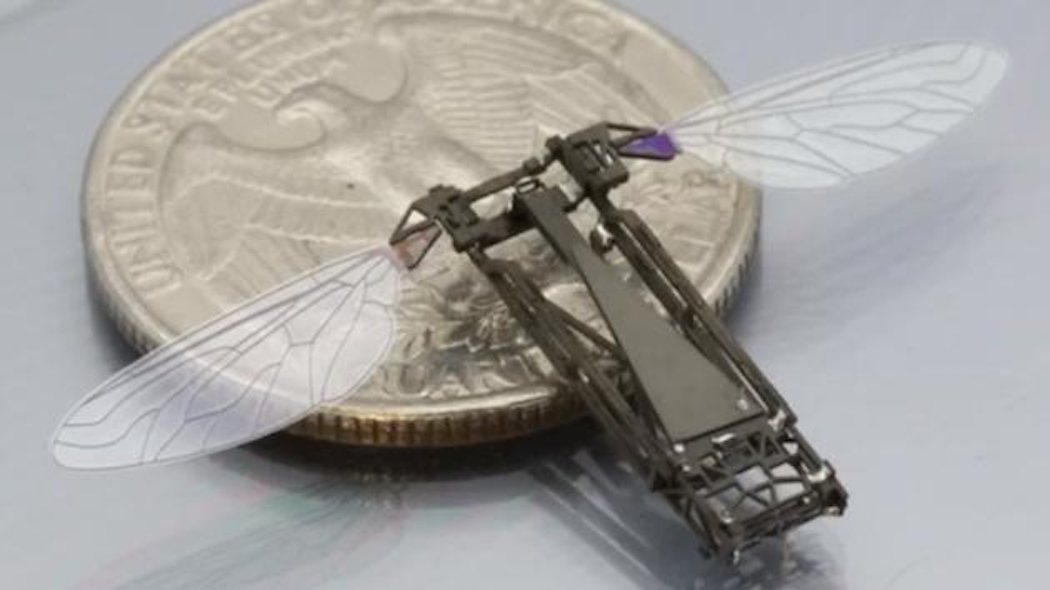
Fly On the Wall
Scientists from Harvard unveiled a breakthrough in the field of robot technology—RoboBee.
RoboBee is a tiny robot no bigger than a fly, and it is currently the world’s smallest robot. And not only is it capable of flight, it could also carry a camera—meaning that, as RoboBee’s technology evolves, it could easily become the world’s smallest drone as well.
Harvard scientists note that the technology was inspired by, unsurprisingly, insects. The bug sized bot is made of carbon fiber and weighs just a fraction of a gram. Its flight capabilities are made possible through a pair of flapping wings powered by electronic ‘muscles.’
Using a pyramid-shaped light sensor made of four phototransistors soldered to create a custom circuit board,the machine is able to find its balance in the air.
Throughout its development, numerous sensors have been tried and tested that could have, in principle, been integrated into the robot—none however have ever performed in free flight. The results demonstrated by these on-board sensors marks a milestone in the research.
Take a moment to see it in action in the video below:

Small Robot, Big Potential
The prospect of tiny, fly-sized drones are numerous, including the possibility of the technology going completely wireless , so that it might one day be able to be used to pollinate crops or further the study of flight mechanisms used by other biological counterparts.
However, right now the researchers see the most potential in RoboBees being able to monitor environmental hazards or be used for search and rescue missions (focusing on searching for survivors after a natural disaster.)
However, it also poses a lot of apprehension in terms of privacy and how a drone this size could potentially be used for endless military applications or for surveillance of companies for marketing or other questionable purposes.